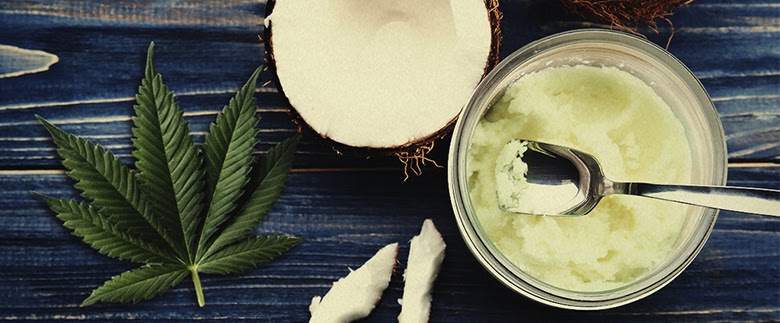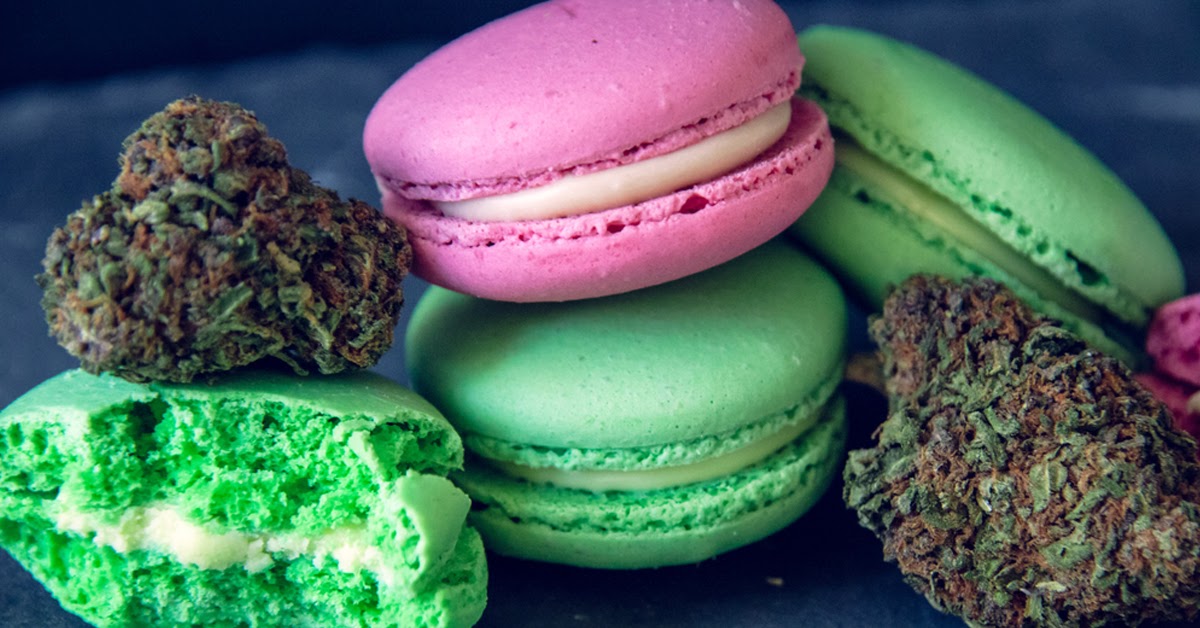Flavoursome, Dripping Goodness, and Delectable; coconut oil is something that accentuates the flavour of any edible. Known as the most sought-after infusions in the canna-world, Cannabis-infused Coconut oil is the perfect answer for anyone searching for a plant-based, fibrous base for your edibles.
In this article, we are taking an in-depth look into the world of canna-coconuts and its recipe.
Let's get started.
Why do we choose Coconut Oil?
It is very curious and common to question the use of coconut oil instead of many other options available in the market today. Simply put, Coconut oil binds extremely well with the cannabinoids since it has a higher concentration of fatty acids. It acts as a great base for cannabis edibles since its high saturated fat content is able to extract 82% of the cannabinoids! Now that's some potent infusion.

In fact, when you compare the coconut oil fat content with Olive oil, there is a difference of over 60% with coconuts taking the lead. This makes Coconut oil a perfect base for every cannabis-edible, whether you're cooking, spreading it on your toast, or adding it to your baking items.
For me, the most preferred aspect is its long-shelf-life owing to its high-fat content.
We know why Coconut Oil but let's take a look at which Coconut Oil?
| Read more: Cannabis Edibles Dosage mg Chart - Find the Right Dose |
Which Coconut Oil should I choose for my Infusion?
Coconut Oils are available in many different types from Virgin, Refined, and many more. If you're confused which one you should begin with, let me make things clear for you.

Virgin Coconut Oil
Virgin Coconut Oil is the most unaltered and pure version of Coconut oil that you can get from the market. With a low smoke point (350°F), it makes a good base for sauteing or baking goods, but might not be a very good addition to high-heat recipes. Keep in mind that it is also expected to carry forward the nutty, prominent coconut scent and flavour to your dish.
Refined Coconut Oil
Refined Coconut Oil, as the name suggests is the coconut oil that goes through a refinement process that removes impurities and strips away the bacteria. This gives it a high smoke point (near 425°F) without any carried forward flavour. Refined Coconut Oil also has a longer shelf life.
Hydrogenated Coconut Oil
Any coconut oil that goes through a hydrogenated process is known as hydrogenated Coconut Oil. This is done to solidify the oil and create a longer shelf life. However, this also increases the trans fat which is not very healthy. You might want to stay clear of this type of Coconut Oil.
MCT Coconut Oil
MCT Coconut oil or Medium-chain triglycerides Coconut Oil are very popular with keto-diet enthusiasts as they contain a short chain of carbon atoms. This means that they are easily and quickly processed, thus releasing energy faster.
The drawback here is that MCT Coconut Oil has a very low smoke point which might take your THC and potency when on high flame.
Choose your preferred Coconut Oil type and you're ready to get started with the recipe. If you're looking for some factors that you need to consider before starting, you can find them in the blog below.
Let's take a look at one more commonly asked question before giving you the entire cannabis-infused coconut oil recipe.
| Read More: Cannabis-Infused Butter Recipe: How To Make Cannabutter? |
What is Lecithin and Should I add it to my recipe?

If you're a curious mind and look at the ingredients from a store-bought edible, chances are you will find the word "lecithin" there. It is not a cannabis word but is a general food additive and emulsifier that is added for the amazing work it does for all those looking to extract the potency of the edibles.
Basically, Lecithin does not enhance the THC or CBD content, neither makes it more binding to the oil, but it helps the human body with the absorption of the cannabinoids. If you add lecithin to your recipe, the small particles in your cannabis-infused coconut oil will be more easily absorbed by the body, allowing you to feel a more active and faster onset of the effects.
Of course, it is completely optional and you can make a potent batch without this little addition. However, I like to add it to mine.
You also get the option to choose between Sunflower Lecithin or Soy Lecithin. I personally like Sunflower one since it is healthier and the liquid form makes it easier to work with the recipe.
Cannabis-Infused Coconut Oil Recipe

Here's what you will need for the recipe:
- 2-5 grams of cannabis flower (depends on your desired potency)
- 1/2 cup (4 oz) Coconut Oil
- Water
- Mason jar
- Baking Sheet
- Aluminium foil
- Grinder
- Pot (For Cooking)
- Mesh strainer/Cheesecloth
- A rubber spatula or spoon
| Read More: Marijuana-Infused Ice-Cream: Best Cannabis Ice-Cream Recipe |
Instructions for the Cannabis-infused Coconut oil:
- The first step is to preheat the oven to 235℉ (113 Celsius)
- Make use of your grinder to shred your herbs, but not too finely since we need to immerse it with the oil later on.
- Place your ground-up flower onto a baking tray, lined with aluminium foil. Once your weed is also on the sheet, cover it with aluminium foil.
- To decarboxylate the weed, place it in the preheated oven for 45 minutes. This will maximize and enhance the cannabinoids of your strain.
- While the weed is decarboxylating, fill the mason jar with coconut oil.
- Take the pot and fill it with water. Keep it over the stove at the medium flame as we don't want the water to boil, but still, be warm enough.
- Take out the decarboxylated weed and place it with the coconut oil in the mason jar. Make sure you seal the lid tightly.
- Now place the mason jar in the pot where the water is boiling. Make sure that the temperature remains between 160℉ and below 200℉, keeping a close eye on your oil.
- This process will go on for about 3-5 hours.
- Once done, strain the coconut oil into your storage container with the help of cheesecloth. Press lightly to ensure you get all the oil into the storage jar. And voila, your coconut-infused oil is ready to be used!
This brings us to the end of our recipe blog on Coconut-infused oil. Make sure you follow the procedure with caution, keeping yourself well within the dosage limit.
For more such content, keep watching this space.



![[UPDATED]Cannabis-Infused Butter Recipe: How To Make Cannabutter?](https://www.olivastu.com/media/magefan_blog/Olivastu_Blog_1200x628_20200421.png)

